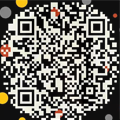大象博物馆,泰国
[ad_1]
大象在泰国有着特殊的地位。它们是皇室典礼的一部分,历史上曾作为战争动物帮助国王征战四方。泰国人尊重这种动物,并与其建立起了独特的关系。比起宠物或劳力,他们更愿意把大象视为家庭成员。在泰国东北部Surin省的Kui族村落中,这一纽带可能更为强大。几个世纪以来,当地社群一直与大象共同生活,从出生至死亡,难以分割。
过去五十年中,由于经济作物的大量种植,Surin原本葱郁的森林遭到破坏,致使Kui族人和他们的大象遭受了极端的干旱以及食物和药物的短缺。由于缺少生存的必需品,他们投身旅游城镇,以求获得食物和工作,其中一些的生活条件令人堪忧。
大象博物馆是大象世界的一部分,由当地政府发起,希望帮助Kui族人和大象重回他们的故乡,并确保适合大象的生活环境。这里不仅仅是展出物品的场所,还要倾听和体现居住在此的村民以及200多头大象的声音,包括长久以来家人关系下对残忍动物利用的反对,以及对未来的期冀。
▼博物馆鸟瞰,aerial view of the museum ©Spaceshift Studio
Elephants have a special status in Thailand. They are part of grand royal ceremonies and were war animals for Kings throughout the country’s ancient history. In addition to being respected, the relationship between elephants and Thai people are unique—being treated as family members rather than pets or labour. The bond is perhaps strongest in the village of the ethnic Kui in Surin province, north-eastern Thailand. For many centuries, the community has lived with elephants that their ways of life, from birth to death, can hardly be separated.
Once lush greenery, the forest of Surin was destroyed in favour of cash crops in the last half-century. The Kui and their elephants suffered extreme droughts, shortages of food and medicinal plants the forest once provided. Deprived of sustenance, the two displaced to tourist towns begging for food or working in elephant camps, some with unsuitable living conditions.
Elephant Museum is part of Elephant World, a project initiated by the local government to bring the two back to their homeland and to ensure the suitable living conditions for the elephants. Not only showcasing objects, but the museum shall also portray the voice of the villagers and more than 200 elephants living here—of their long-established familial relationship disapproval of the cruelty of animal exploitation, and of their hope for the future.
▼大象与博物馆,elephant and the museum ©Spaceshift Studio
在空旷的基地上,高低各异的弯曲墙面生长而出,如同将建筑打开以迎接大象大小的游客。倾斜的墙面相互交错,形成将游客引入室内的间隙。
Amidst the vast treeless landscape, curved walls at varying heights sprout from the ground, seemingly opening the building up to visitors of an elephant’s size. The walls slope and cross one another, revealing gaps that lead visitors to the inside.
▼顶视图,项目由不同大小的庭院组成,top view, the project is composed of courtyards in different sizes ©Spaceshift Studio
▼墙体如同从地面生长而出,the walls look as if growing from the ground ©Spaceshift Studio
▼墙体交错的间隙形成入口,entrance created at the gap between the walls ©Spaceshift Studio
▼阳光在空间中形成变化的光影,sunlight shining in the space creating changing light and shadows ©Spaceshift Studio
不同形状和大小的庭院面向四间展廊开放。有些庭院中设有小水塘,有些露出红色土地,与周边环境一致。室外路径、有顶空间和开放庭院采用不同尺度,重现了当地的特色元素,从大象、人、人的住宅和浴池,到供大象玩耍的泥塘,不一而足。
Courtyards of different shapes and sizes open up from the four exhibition galleries. Some are filled with small pools, some with reddish earth just like the landscape outside. Different scales of outdoor paths, sheltered space, and open courtyards, recall elements of the area: from elephants, humans, their houses, the ponds they both bathe, to the dirt bath the playful elephants enjoy.
▼建筑适合大象的尺度,building in the scale of elephants ©Spaceshift Studio
▼不同形式的庭院,courtyards in different styles ©Spaceshift Studio
为了展现太阳下的生活,阳光是设计中的必要元素。部分房间和道路充满明亮的阳光,另一些则相对昏暗。光影在一天中随太阳角度的变化而改变。庭院和外墙可以供展览使用,而展廊内也许只设置座椅,人们可以坐在这里休息,观看室外发生的活动,反思人与大象的共存关系。
Portraying life under the sun, sunlight is an essential element in the design. Rooms and paths are brightly lit by sunlight in certain areas and dimmed in others. The effects change throughout the day, depending on the angle of the sun. Exhibitions may happen in the courtyards or on exterior walls. And inside the galleries, one may only find seats to rest and look out at the content displayed outside while reflecting on the coexistence between the two species.
▼室外通道,outdoor path ©Spaceshift Studio
▼室内空间,interior space ©Spaceshift Studio
▼从室内看向室外展示空间,view to the exterior exhibition area from the interior ©Spaceshift Studio
项目使用了超过480万块陶土砖,材料来自当地土壤,采用世代相传的技术手工烧制而成。对于缺少工作机会的城镇来说,项目的建设过程为当地居民创造了工作岗位和收入,同时提高了经常被忽视的本地材料的价值。背井离乡几十年,博物馆的建造将让Kui族人,大象,以及Surin的人民重回自己的土地。建筑的功能和施工过程将鼓励他们以自己的历史为豪,并且为他们喜爱的大象重塑尊严。
Over 480,0000 fired clay bricks are made by hand from loam found in the area with the technique that has been passed down through generations. In the town where there are not many job opportunities, the construction process creates jobs and income for the locals while increasing the value of the often-overlooked local material. After decades of struggling away from home, the museum shall empower the Kui, the elephants, and the people of Surin. Its programme and the building process shall encourage them to take pride in their heritage, and restore the dignity of their beloved elephants once again.
▼项目使用超过480万块手工砖,project using over 480,0000 fired clay bricks made by hand ©Spaceshift Studio
▼平面图,plan ©Bangkok Project Studio
大象世界的其他项目:瞭望砖塔
other project in the Elephant World: Brick Observation Tower
Project Name: Elephant Museum
Architecture Firm: Bangkok Project Studio
Website: https://www.facebook.com/BangkokProjectStudio/
Contact e-mail: bangkokprojectstudio@gmail.com
Firm Location: Bangkok, Thailand.
Completion Year: 2020
Gross Built Area: 5400 sq.m
Project location: Surin Province, Thailand.
Lead Architects: Boonserm Premthada
Lead Architects e-mail: bangkokprojectstudio@gmail.com
Photo credits: Spaceshift Studio
Photographer’s website: http://spaceshiftstudio.com/
Photographer’s e-mail: spaceshiftstudio@gmail.com
Design Team: Boonserm Premthada, Nathan Mehl
Engineer : Preecha Suvaparpkul
Clients: Surin Provincial Administration Organisation
Engineering & Construction: Rattanachart Construction Co, Ltd.
Consultants: Surin Provincial Administration Organisation
More: Bangkok Project Studio ,更多关于他们请至:Bangkok Project Studio www.zoscape.com.
[ad_2]


























